German Hospital (1887-1917) and Research Hospital (1917-1963)
Introduction
Text-to-speech Audio
This is the original location of Research Hospital, founded as "German Hospital" by Kansas City’s German community in 1887. The hospital’s mission was to provide quality medical care to the people of Kansas City, regardless of race, creed, or ability to pay. Starting in a three-story house, German Hospital later grew to include a complex of buildings, including a research laboratory and school of nursing, thanks to tireless fundraising and the generosity of prominent German Americans, including William Volker. During the First World War, when anti-German sentiment was strong, the trustees changed the name to Research Hospital. The name change followed closely after the opening of the hospital's research laboratory, the first of its kind in the region. Research Hospital operated on Hospital Hill in the shadow of Kansas City’s more extensive facilities, General Hospital No. 1 and General Hospital No. 2. The small hospital operated for decades before raising the money to build a new, much larger, modern facility at Meyer Blvd and Prospect in 1963. The original Research complex was purchased by the city and used by General Hospital until its abandonment and eventual demolition. University Health #4 Office Building sits at this location today.
Images
The original German Hospital in the house of J. Boyd Henri
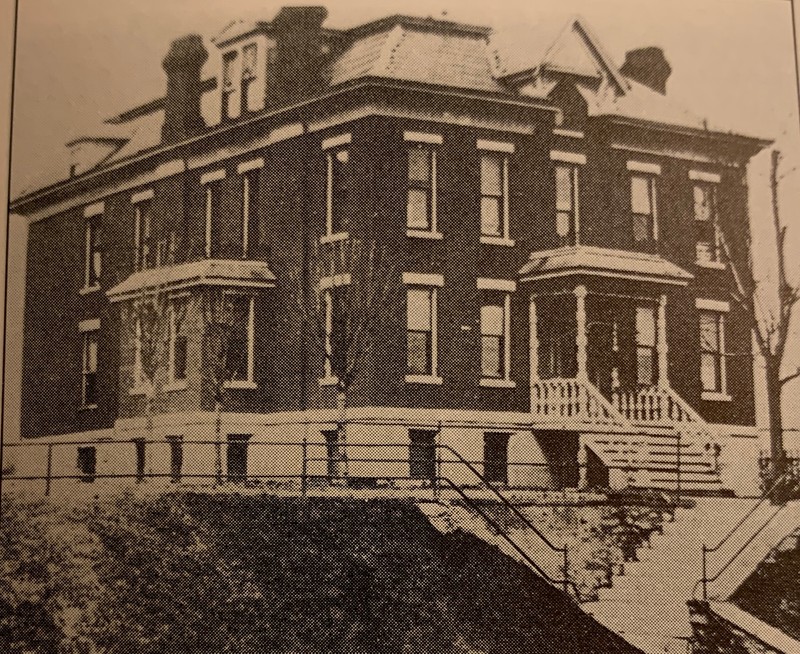
The 1902 dormitory addition on the original German Hospital
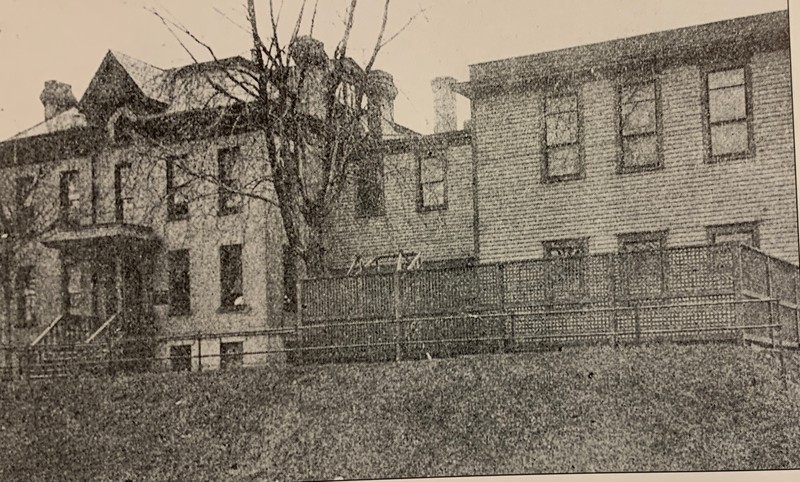
Postcard of German Hospital
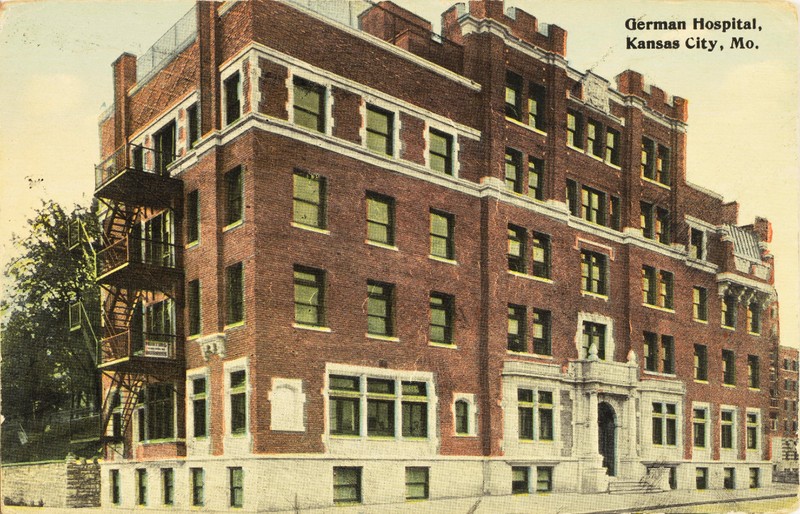
Postcard of Research Hospital circa 1930s
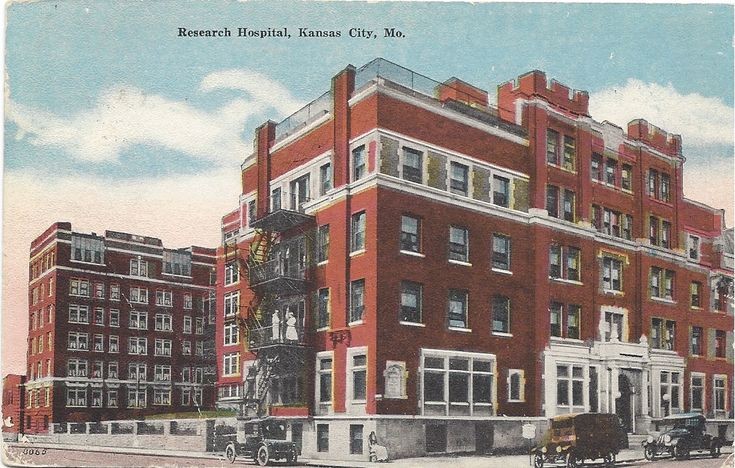
Research Hospital in 1950
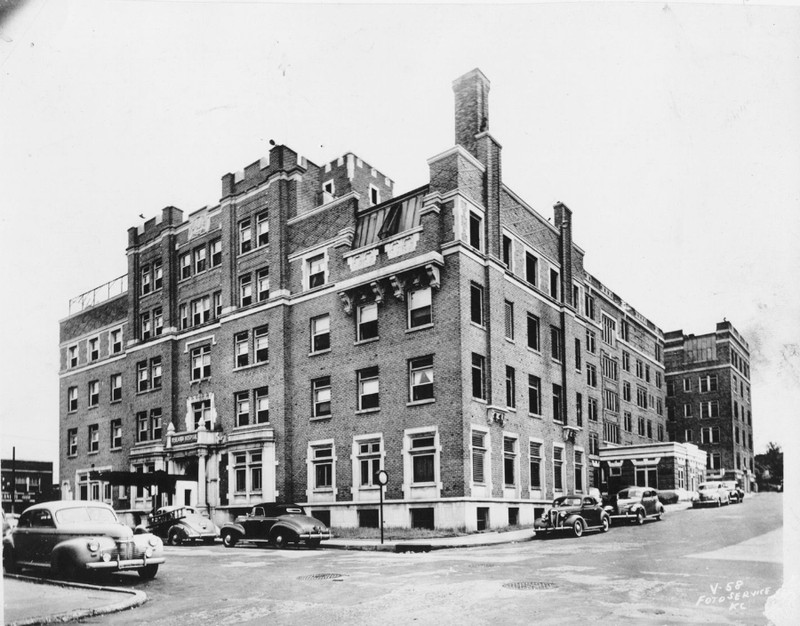
1950 Aerial Photo of Hospital Hill with the hospitals labeled
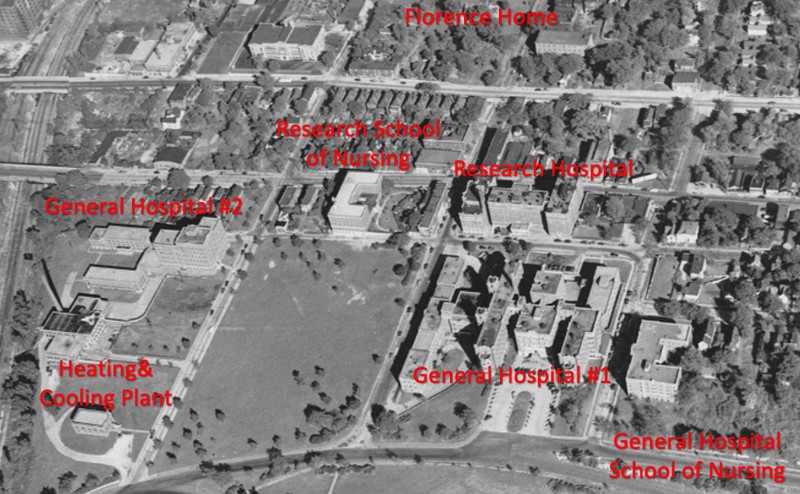
University Health #4, originally known at the Hospital Hill Center medical building occupies the former site of Research Hospital
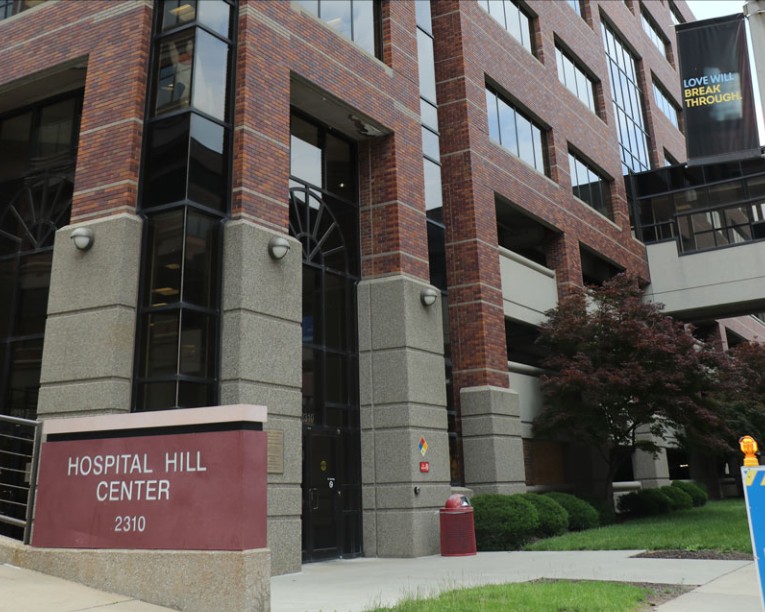
William Volker, Kansas City philanthropist and the "Father of Research Hospital"
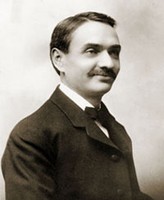
Backstory and Context
Text-to-speech Audio
On Jan 18, 1886, about 200 influential members of Kansas City’s German American community gathered at the request of the German Aid Association, one of the city’s largest charitable organizations. William Brendel, president of the association made a proposal that the city’s German American community begin fundraising for the creation of a charity hospital to provide medical care for the city’s citizens regardless of race or creed or ability to pay. Over 100 people signed on that day to what became known as the German Hospital Association.
Over the next year the German Hospital Association engaged in fundraising through public subscriptions, musical performances, and craft fairs in order to raise money for the planned hospital. A committee of Kansas City physicians from the German American community made plans for the eventual German Hospital. The association identified a suitable location in the home of J. Boyd Henri at the southwest corner of 23rd and Holmes down the street from the City Hospital at 22nd and McCoy on what had become known as the Hospital Hill.
Henri, a prosperous Kansas City building contractor, had originally built a frame home at this location in 1883 but it was destroyed by fire two years later. He rebuilt it as a three-story brick structure with a full basement. However, he and his wife divorced in 1886 and this necessitated the sale of the home. The German Hospital Association purchased it June of 1886 for $10,000 and proceeded with a $4000 renovation to convert the home into a hospital. The now 300 hundred strong German Hospital Association assured that the Hospital was built without debt and with $500 in the bank. When the German Hospital was dedicated on July 10, 1887, there was room for 25 patients. Four nuns from the Order of the Sisters or Saint Francis in Springfield, Illinois were recruited to become the administrators and nurses of the hospital. Support for the hospital came from yearly donations and charity musical performances, mostly of German operas. From the beginning, more than 15% of patients were charity cases. The hospital was never segregated, which made it unique among Kansas City health care institutions.
In 1895, the German Hospital built a large 2-story addition to the original home. This was followed in 1902 by a dormitory for the Sisters of Saint Mary, who had replaced the Sisters of Saint Francis as administrators. However, by this time it was clear that German Hospital was much too small for the needs of Kansas City, whose population had grown to 200,000. After the Sisters of Saint Mary decided to found their own hospital, St. Mary’s Hospital, in 1907, the board of directors decided to tear down the original facilities and build a modern hospital building similar to what the city had planned for its General Hospital across the street.
The new four-story, $70,000 German Hospital was completed in 1911 and could accommodate 90 patients at a time. The hospital generated its own electricity and had a special “cooling room,” chilled with an early form of refrigeration for fever patients. There was a new obstetrics department and one of Kansas City’s first X-ray machines. The hospital also began to rely on professional nurses rather than relying on religious orders to provide this service.
In 1917, the hospital built a large $375,000 addition. Included was a $35,000 research laboratory, a gift of German American Philanthropist William Volker. It was the first of its kind in Kansas City. Volker would also join the hospital board at this time. Because of anti-German sentiment brought on by America’s entry in the First World War, the board decided to rename the organization Research Hospital after its new research laboratory.
Mr. Volker’s involvement with Research Hospital would grow over the years. He became president of the board of directors and at the start of each year he would write a check to the hospital to cover any deficits in its operating revenue. He gave the hospital a $100,000 endowment, $75,000 to build a diagnostic clinic, and $268,000 to build a 4-story school of nursing across the street at the northwest corner of 23rd and Holmes. For his generosity he was called “the Father of Research Hospital” and his portrait was hung in the entryway of the nursing school. Before his death in 1947, Volker gifted a $2.5 million endowment to go towards a contemplated new hospital in south Kansas City.
By 1950, Research Hospital was land locked with little room to expand or modernize. Kansas City’s General Hospitals No. 1 and No. 2 had become sprawling complexes that could accommodate hundreds of patients. It became clear that if Research Hospital was to continue to fulfill its mission, it would need to move, preferably to south Kansas City, which had been growing in recent decades.
In 1954, James Lynn, president of Kansas City’s Lynn Insurance Company offered to sell a large portion of his 85-acre estate to Research Hospital. The section fronting Prospect from 63rd St. south to Meyer Blvd had once been a part of his private golf course. Lynn had long been associated with a religious organization known as the Self Realization Fellowship, becoming its leader in 1950. Being in poor health, he had dedicated the last few years of his life to giving his money to charity. He sold the property to Research Hospital at far below market value, allowing them to afford the move.
Ground was broken on the new 600-bed, three story Research Hospital in 1955. Construction would take 7-years. When the old Research Hospital was completely vacated in 1963, the city purchased it to be used by General Hospital. Over the years it served General Hospital in a variety of capacities and was the first home to the UMKC School of Medicine from 1971-1974. After the construction of Truman Medical Center (now University Health) in 1976, the facilities were gradually abandoned and eventually torn down in the late 1980s. Today University Health #4, a medical office building occupies the site.
Sources
"In Hospital Start." Kansas City Star (Kansas City, Mo.) September 28th, 1955. .12.
"The German Hospital." Kansas City Times (Kansas City, Mo.) February 15th, 1886. .5.
"The Opening of the Summer Opera Season at the Gillis-The German Hospital Concert." Kansas City Times (Kansas City, Mo.) May 2nd, 1886. .4.
"Evening Illuminations." Kansas City Journal (Kansas City, Mo.) September 21st, 1883. .4.
"The German Hospital." Kansas City Journal (Kansas City, Mo.) January 18th, 1886. .3.
"German Hospital is Among Finest." Kansas City Journal (Kansas City, Mo.) May 27th, 1917. .7.
"William Volker Plans Princely New Year's Gift." Kansas City Journal (Kansas City, Mo.) December 29th, 1920. .3.
"Research Hospital Founders Honored." Kansas City Journal (Kansas City, Mo.) November 26th, 1923. .11.
"New Hospital Open Soon." Kansas City Star (Kansas City, Mo.) May 20th, 1917. .7.
"A Nurse's Home, The Gift of William Volker, Will Be Research Hospital's Next Addition." Kansas City Star (Kansas City, Mo.) February 21st, 1926. .65.
"Research 40 Years Old." Kansas City Star (Kansas City, Mo.) January 17th, 1926. .10.
"Additional Building For German Hospital." Kansas City Post (Kansas City, Mo.) December 13th, 1909. .3.
"The German Hospital." Kansas City Star (Kansas City, Mo.) July 11th, 1887. .8.
"William Volker Shrine To Be Dedicated At Research Hospital." Kansas City Star (Kansas City, Mo.) October 21st, 1927. .8.
"Baths of Germany Here." Kansas City Star (Kansas City, Mo.) November 21st, 1911. .8.
Soward, James L.. Hospital Hill: An Illustrated Account of Public Healthcare Institutions in Kansas City, Missouri. Kansas City, Mo.. Truman Medical Center Charitable Foundation, 1995.
Rajarsi Janakananda (James J. Lynn) A Great Western Yogi. Los Angeles, CA. Self Realization Fellowship Publishers, 1977.
Soward, James L.. Hospital Hill: An Illustrated Account of Public Healthcare Institutions in Kansas City, Missouri. Kansas City, Mo.. Truman Medical Center Charitable Foundation, 1995.
Soward, James L.. Hospital Hill: An Illustrated Account of Public Healthcare Institutions in Kansas City, Missouri. Kansas City, Mo.. Truman Medical Center Charitable Foundation, 1995.
Kansas City Public Library, Missouri Valley Collection website, accessed 1/19/2025 https://kchistory.org/image/german-hospital?solr_nav%5Bid%5D=a12c204d082a750e4d0f&solr_nav%5Bpage%5D=0&solr_nav%5Boffset%5D=0
Postcard courtesy of Chris Wolff
Kansas City Public Library, Missouri Valley Collection website, accessed 1/19/2025, https://kchistory.org/image/older-view-research-hospital?solr_nav%5Bid%5D=8c4af2ca1fae9f7ed9e2&solr_nav%5Bpage%5D=0&solr_nav%5Boffset%5D=10
Kansas City Public Library, Missouri Valley Collection website, Accessed 1/19/2025, https://kchistory.org/islandora/search/hospital%20Hill?type=edismax
University Health Website, accessed 1/19/2025, https://www.universityhealthkc.org/locations/university-health-4/
UMKC, University Archives photo
